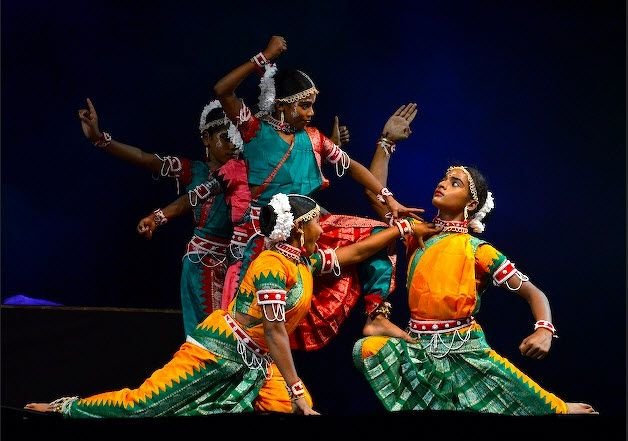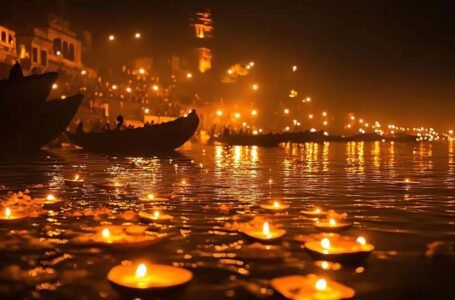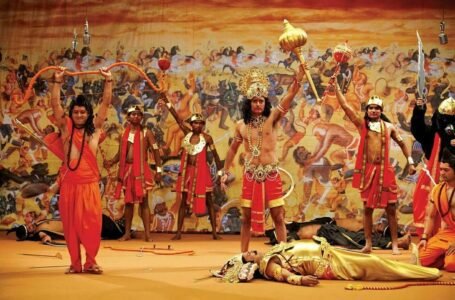Gotipua: The Graceful Precursor to Odissi Dance

Gotipua is one of India’s most unique and mesmerizing traditional dance forms, hailing from the culturally rich state of Odisha. This folk dance, primarily performed by young boys dressed as women, is celebrated for its vibrant costumes, intricate expressions, acrobatic poses, and devotional essence. Often considered the precursor to the classical Odissi dance, Gotipua embodies Odisha’s spiritual and artistic heritage, showcasing its deep connection with Lord Jagannath and Krishna.
Origins and Evolution
The history of Gotipua dance can be traced back several centuries, to a time when Odisha’s temples were adorned with Devadasis, or female temple dancers, who dedicated their lives to worshipping Lord Jagannath through dance and music. Known as Maharis in Odisha, these women were the custodians of spiritual art forms and carried forward a legacy of devotion and expression.
However, during the reign of Rama Chandra Dev, the Bhoi dynasty witnessed the decline of the Mahari tradition due to socio-political changes. As a result, Gotipua was introduced as a means to preserve the ancient dance tradition and honor the temple rituals. Young boys, referred to as “Goti” (single) and “Pua” (boy), took on the mantle of performing in place of the Maharis. Their androgynous appearance, achieved through elaborate costumes and makeup, allowed them to embody the divine feminine grace required for the art.
Today, Gotipua remains an integral part of Odisha’s cultural identity. While the Devadasi system has faded into history, Gotipua continues to thrive in certain regions, especially in the historic village of Raghurajpur near Puri, which is renowned for its Gotipua dance troupes.
Training and Preparation
The journey of a Gotipua dancer begins at an early age, typically around five or six years old. Boys are trained rigorously in traditional gurukuls or akhadas, where they learn singing, dancing, yoga, and acrobatics. This holistic training ensures they develop the physical agility and emotional depth necessary for performing the intricate moves and expressions of Gotipua.
One of the most striking aspects of Gotipua is the transformation of young boys into graceful feminine dancers. Their preparation involves:
Hair Styling and Makeup: Dancers grow their hair long and style it into a neat knot adorned with floral garlands. Their faces are painted with a mixture of red and white powder, kajal is applied to elongate their eyes, and a decorative bindi surrounded by sandalwood patterns completes the look.
Costume: The traditional attire includes a brightly colored blouse called a Kanchula and an apron-like embroidered silk cloth called a nibibandha, tied around the waist. Some dancers also wear a pattasari, a long, thin fabric wrapped tightly around the body. Modern adaptations have introduced easier-to-wear versions of these costumes.
Jewelry and Alta: Beaded necklaces, bracelets, and armbands enhance the dancer’s appearance, while their palms and soles are painted with alta, a red liquid considered auspicious.
Every element of their attire, from the jewelry to the bells on their ankles, holds sacred significance, reflecting the spiritual essence of their performances.
Performance Structure
Gotipua performances are deeply rooted in devotion and artistry, seamlessly blending storytelling, music, and dance. The dance is structured into three main segments:
- Vandana: The performance begins with a prayer or invocation, where the dancers express gratitude to Mother Earth, Lord Jagannath, their guru, and the audience. This segment highlights humility and reverence, setting the tone for the rest of the performance.
- Abhinaya: Abhinaya, or the enactment of a song, is a cornerstone of Gotipua. Dancers interpret ancient poetry, particularly verses from Jayadeva’s Gita Govinda, which depict the divine love between Radha and Krishna. Their expressions, eye movements, and hand gestures (mudras) bring the poetic imagery to life, creating a visual symphony of grace and emotion. A popular verse often performed in this segment is:
“Come and see, my love
Here comes Krishna, the flute player, the Supreme Performer.
He dances wearing ankle bells,
Creating lovely rhythmic patterns
Listen to his melodies, the mardala beats,
Listen to his flute and clappings.”
- Bandha Nritya: This segment showcases the physical prowess of the dancers through acrobatic yogic postures, known as bandhas. Inspired by mythological scenes from Krishna’s life, these intricate poses require immense flexibility, balance, and strength. Bandha Nritya draws parallels to visual art forms like the pattachitra paintings of Odisha, offering a dynamic representation of divine stories.
Cultural and Artistic Significance
Gotipua is more than just a dance form; it is a cultural treasure that bridges the gap between Odisha’s folk and classical traditions. The dance is accompanied by traditional Odissi music, featuring instruments like the mardala (a percussion instrument), harmonium, violin, flute, and gini (small cymbals). The music complements the dance, enhancing its rhythmic and melodic appeal.
The dance also serves as a vital link to Odisha’s spiritual heritage. By portraying stories from the lives of Radha and Krishna, Gotipua fosters a deep sense of devotion and connects audiences with their cultural roots. The elaborate expressions and gestures used in Gotipua have significantly influenced the classical Odissi dance, enriching its repertoire and techniques.
Repertoire and Symbolism
The repertoire of Gotipua dance includes a wide range of themes and postures, each imbued with symbolic meaning. Some of the key poses and their significance include:
Padmasana (Lotus Pose): Symbolizing purity and spiritual awakening.
Hansa (Swan Pose): Representing wisdom, grace, and beauty, associated with the goddess Saraswati.
Kandarpa Ratha (Chariot of Love): Depicting the divine chariot of Kandarpa, the god of love.
Kaliyadalana: Narrating the story of Krishna subduing the serpent Kaliya.
Garuda (Eagle Pose): Reflecting the mythical vehicle of Lord Vishnu.
These poses not only showcase the dancers’ physical agility but also serve as visual representations of Odisha’s mythological and artistic heritage.
Challenges and Revival Efforts
Despite its rich legacy, Gotipua faces several challenges in the modern era. With the increasing urbanization and globalization of culture, traditional art forms like Gotipua often struggle to find relevance in contemporary society. Many young boys who dedicate their childhood to mastering this art form face an uncertain future as they transition into adulthood.
The dance’s physically demanding nature also limits its longevity, as dancers find it increasingly difficult to perform the intricate poses and acrobatics with age. Additionally, the lack of institutional support and dwindling patronage pose significant hurdles to the preservation of Gotipua.
However, efforts are being made to revive and sustain this art form. The Guru Kelucharan Mohapatra Odissi Research Centre organizes the annual Gotipua Dance Festival in Bhubaneswar, providing a platform for young dancers to showcase their talent. Organizations and artists are also working to document and promote Gotipua through workshops, performances, and cultural exchanges.
Global Recognition and Legacy
Gotipua has gained international recognition for its unique blend of devotion, artistry, and athleticism. Dance legends like Kelucharan Mohapatra, who was a Gotipua dancer in his youth, have played a pivotal role in popularizing the art form and elevating it to global prominence.
The dance continues to inspire audiences with its timeless charm and spiritual depth. It serves as a reminder of the rich cultural heritage of Odisha and the enduring legacy of its temple traditions.
Conclusion
Gotipua is not just a dance form; it is a living testament to Odisha’s artistic ingenuity and spiritual devotion. From its origins as a temple tradition to its evolution into a celebrated cultural art form, Gotipua embodies the resilience and creativity of India’s folk heritage.
In an age of rapid cultural transformation, Gotipua stands as a beacon of tradition, reminding us of the importance of preserving and cherishing our artistic legacies. As young boys continue to carry forward this timeless tradition, Gotipua remains a vibrant symbol of Odisha’s cultural identity and its unbreakable bond with the divine.


